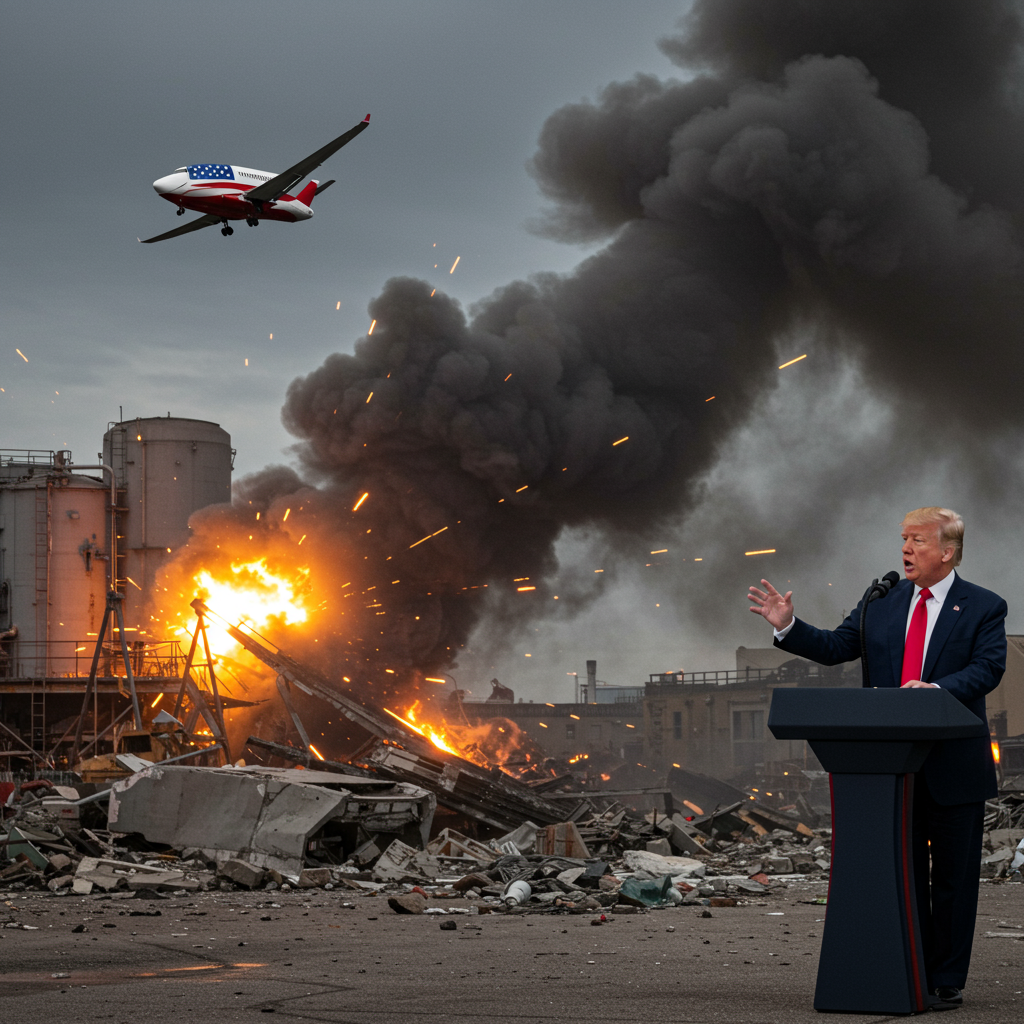Massive US Airstrikes Target Iran’s Nuclear Program
In a significant escalation of regional tensions, the United States launched a series of “massive precision strikes” against three key Iranian nuclear facilities on Saturday. President Donald Trump announced the operation, hailing it as a “spectacular military success” aimed at dismantling Iran’s nuclear enrichment capabilities.
The audacious mission involved a coordinated attack using some of the most powerful weapons in the U.S. arsenal.
Advanced Weaponry Deployed
According to U.S. officials, B-2 Spirit stealth bombers, flying a non-stop, approximately 37-hour journey from Whiteman Air Force Base in Missouri with multiple mid-air refuelings, delivered Massive Ordnance Penetrator (MOP) bombs – often referred to as “bunker busters.” These 13,600 kg GBU-57 bombs are the Pentagon’s most potent penetrating weapon and were reportedly used for the first time in combat during this operation. Six B-2s are reported to have struck Fordow, dropping a dozen GBU-57s, while another B-2 hit Natanz with two.
Additionally, Tomahawk land attack cruise missiles were fired at targets in Iran, reportedly from a U.S. Navy submarine, adding another dimension to the multi-pronged assault. Targets included the Fordow, Natanz, and Isfahan nuclear facilities. The deeply buried Fordow site, built into a mountain, was a primary objective, noted by experts as being beyond the penetration capabilities of conventional Israeli weapons, necessitating the use of the specialized GBU-57.
Context of Rising Tensions
The U.S. strikes follow an intense period of aerial conflict between Iran and Israel, including unprecedented Israeli assaults on Iranian military and nuclear targets in the preceding week. Israeli leaders reportedly coordinated with the U.S. on the operation and had previously requested the use of the GBU-57 against Fordow. The U.S. intervention comes amidst assessments that prior Israeli strikes had only set back Iran’s nuclear program by a limited timeframe.
Conflicting Assessments on Damage
While President Trump declared Iran’s “key nuclear enrichment facilities have been completely and totally obliterated,” battle damage assessments remain fluid. A U.S. official stated that Fordow was “taken off the table.” However, Iranian state media and eyewitness accounts near Fordow contradicted claims of massive destruction, suggesting only entrances were bombed and nuclear materials had been evacuated. Iran’s Atomic Energy Organization deputy director claimed no off-site radiation had occurred due to prior planning and asserted residents near the sites remained safe. Satellite imagery captured unusual truck and bulldozer activity near Fordow before the strike, potentially indicating preparations, and a thermal ‘flash’ was detected around the time of the attack.
Immediate Aftermath: Iranian Retaliation
Following the U.S. action, Iran launched multiple salvos of ballistic missiles toward Israel. The Israel Defense Forces (IDF) reported two waves of missile launches in the early hours of Sunday morning. Emergency services in Israel received reports of impacts in northern and central areas, including direct damage to residential buildings in three districts.
In response to these launches, the IDF stated it conducted counter-strikes in western Iran, targeting the missile launchers used in the attack and Iranian military forces involved.
International Response and Concerns
The International Atomic Energy Agency (IAEA) reported early Sunday that “no increase in off-site radiation levels has been reported as of this time” at the targeted Iranian nuclear facilities, adding that further assessments would follow.
Iran’s Foreign Minister strongly condemned the U.S. strikes as “outrageous” with “everlasting consequences,” labeling the action “extremely dangerous, lawless and criminal” and a violation of international law and the UN Charter. Iran asserted its right to self-defense and requested an emergency meeting of the UN Security Council.
Within the U.S., the strikes drew divided reactions. While some praised the decisive action, others in Congress criticized it as a potential violation of War Powers, arguing it bypassed legislative authority and was grounds for alarm. Concerns were raised about potential Iranian retaliation targeting U.S. bases, energy facilities, or shipping routes in the Middle East, as well as asymmetric responses like cyberattacks. The U.S. had reportedly evacuated personnel and assets from some Persian Gulf bases and evacuated citizens from Israel and the West Bank prior to the strikes.
Defense Secretary Pete Hegseth is scheduled to provide a briefing from the Pentagon on Sunday morning to offer further details on the operation and its implications.



